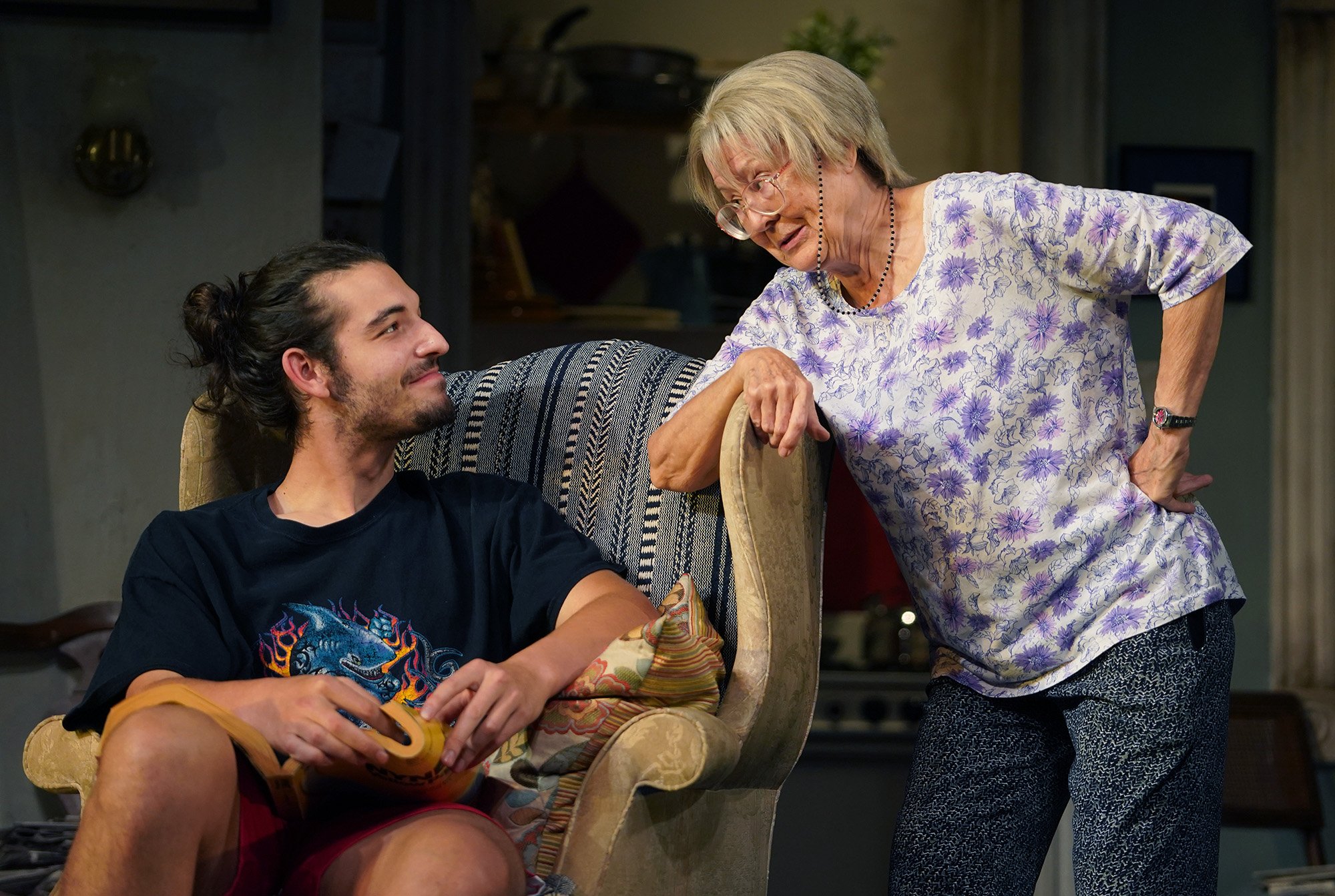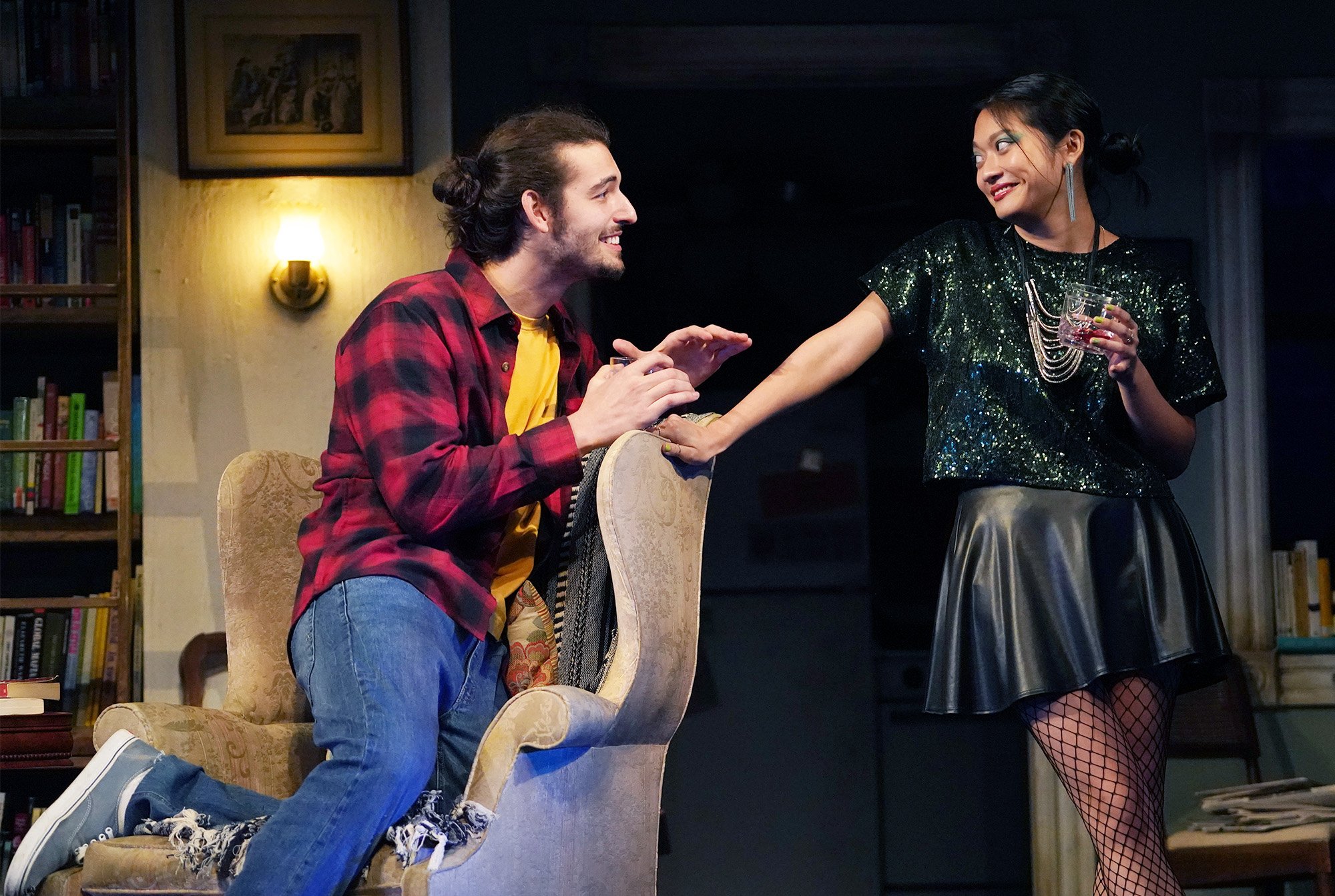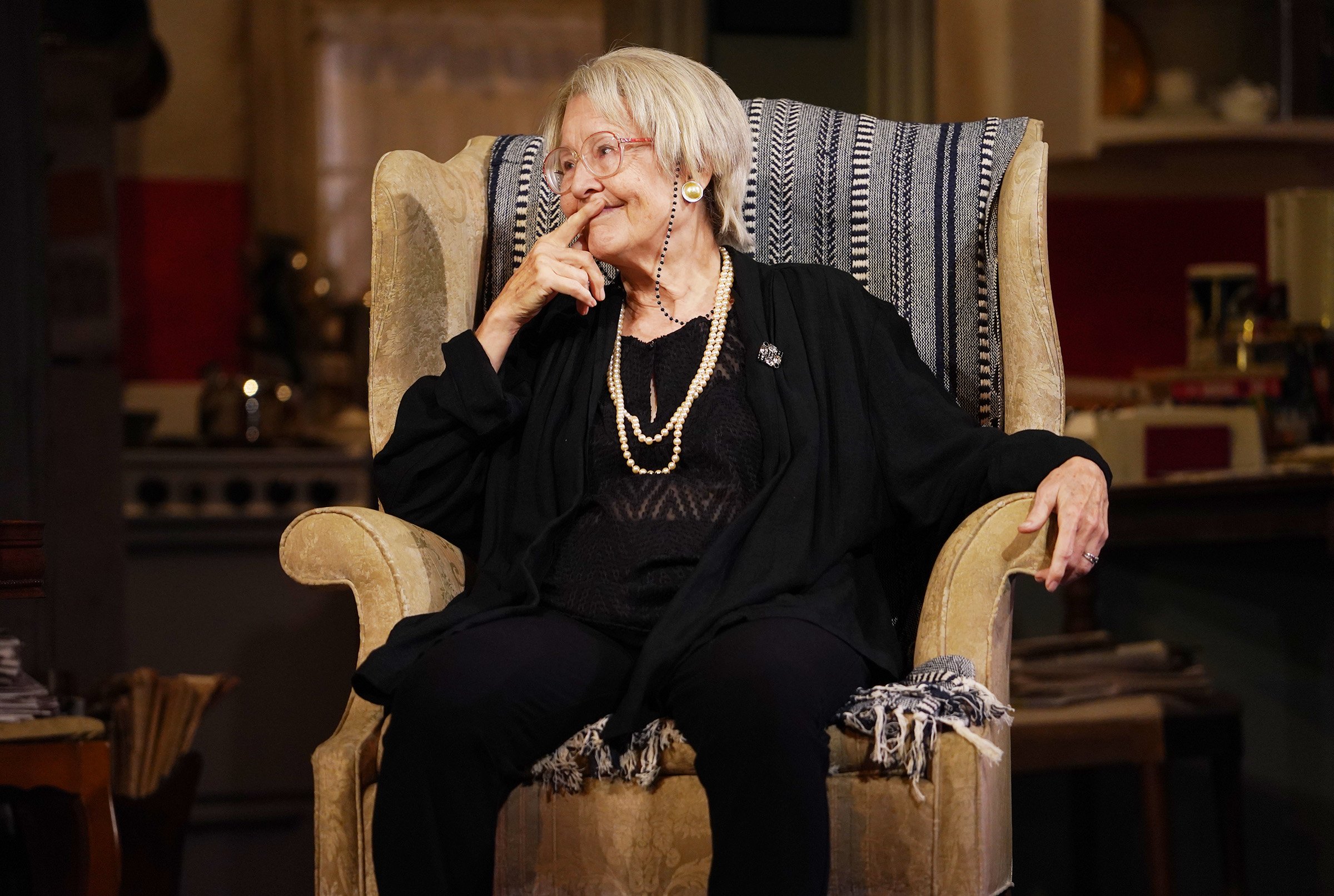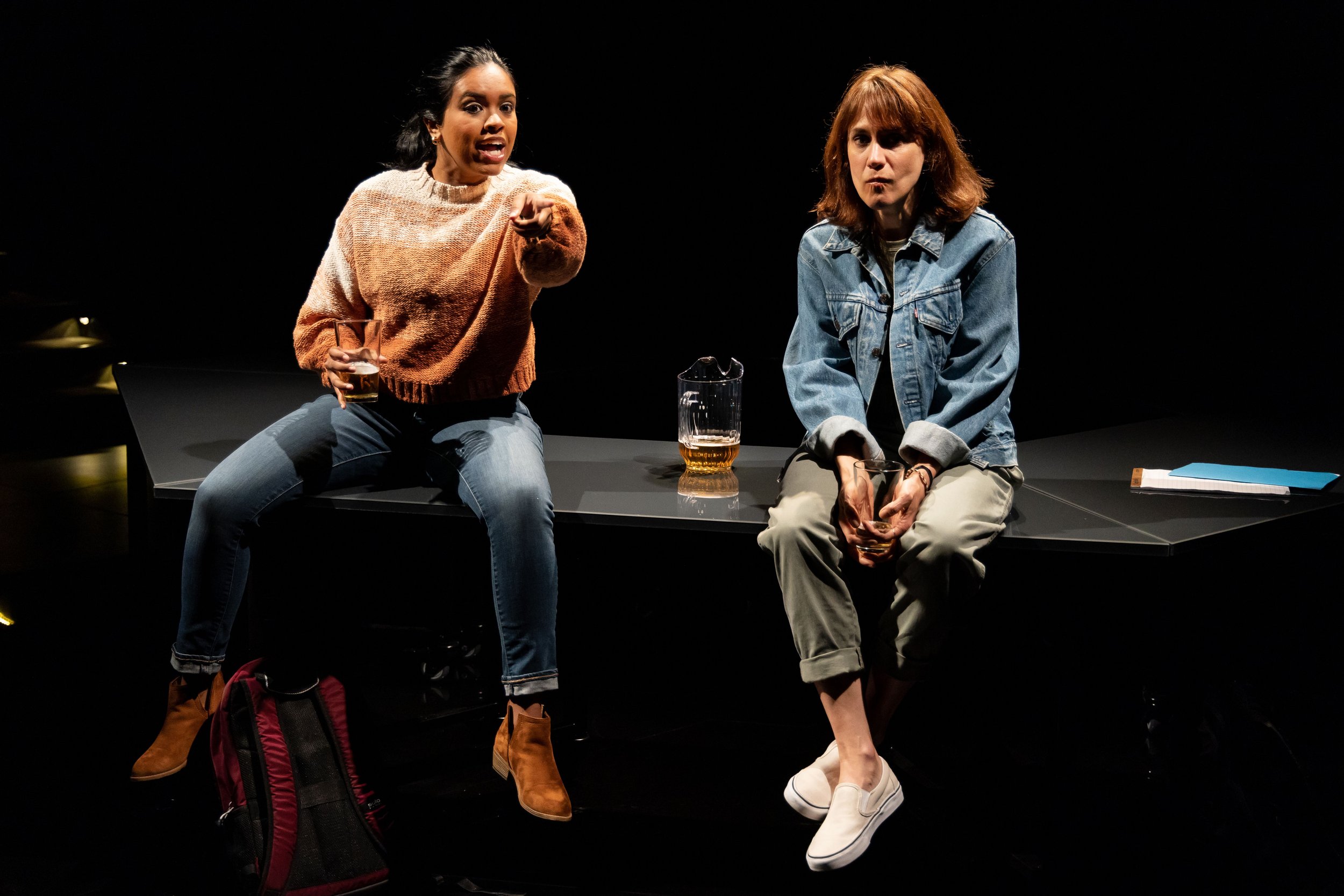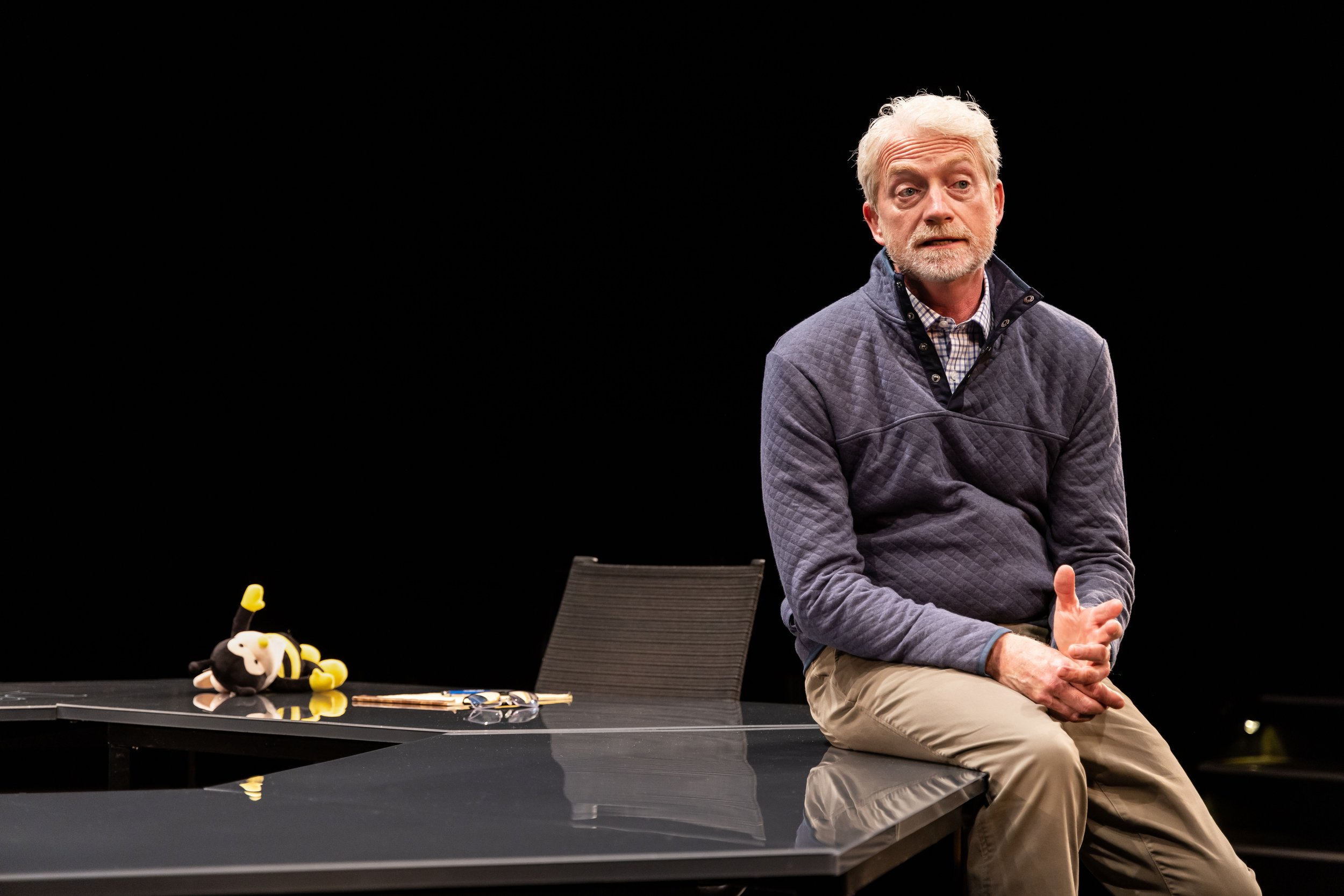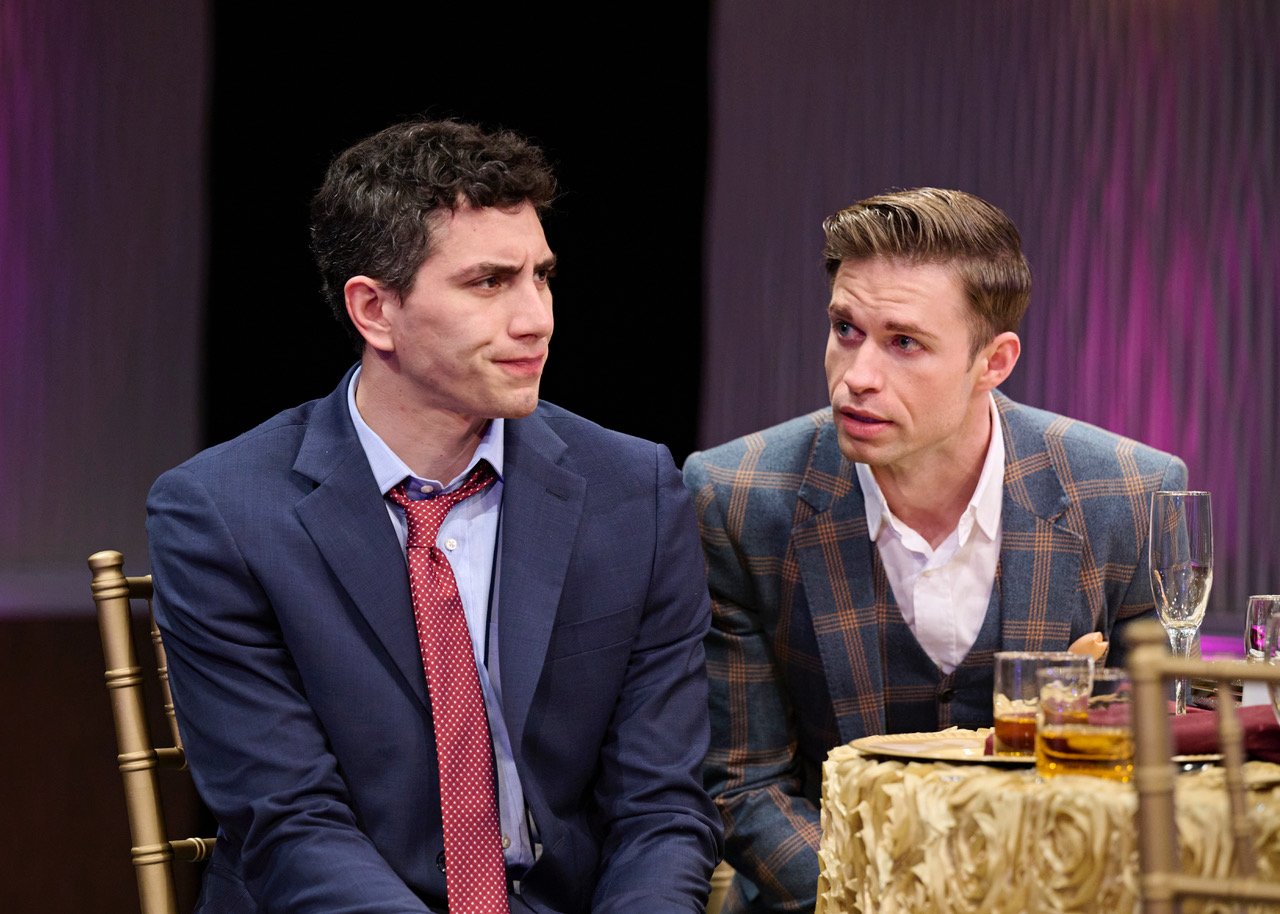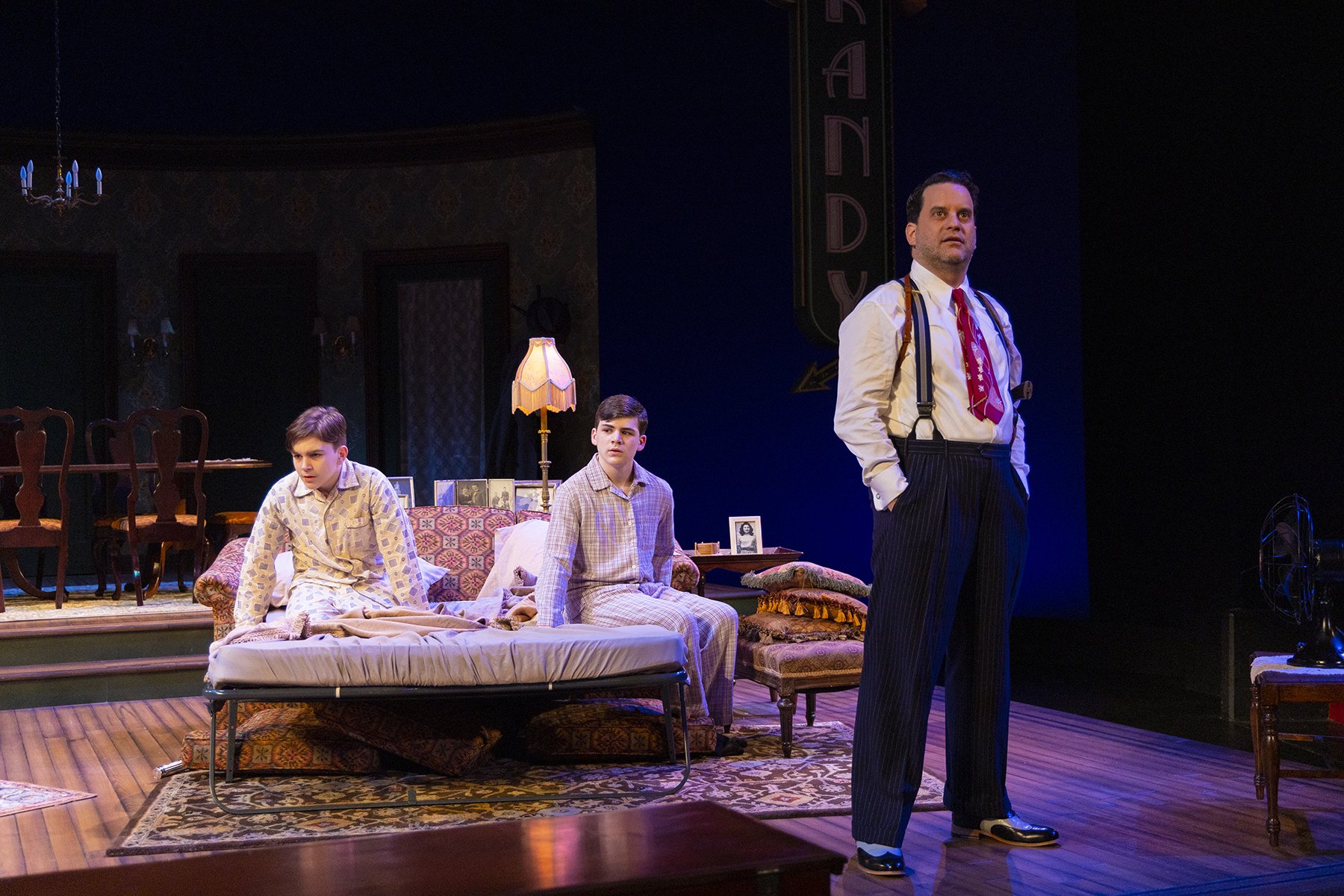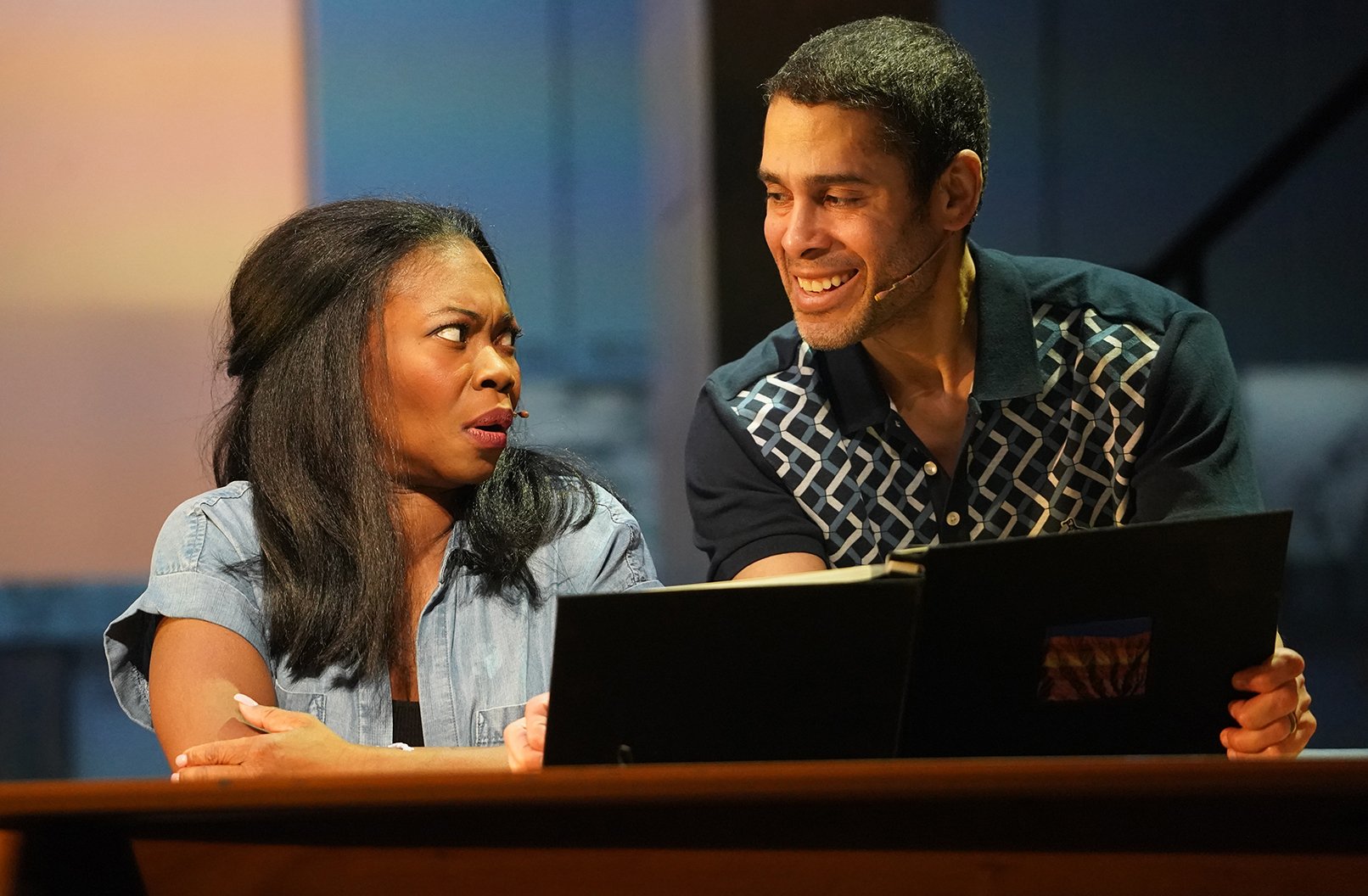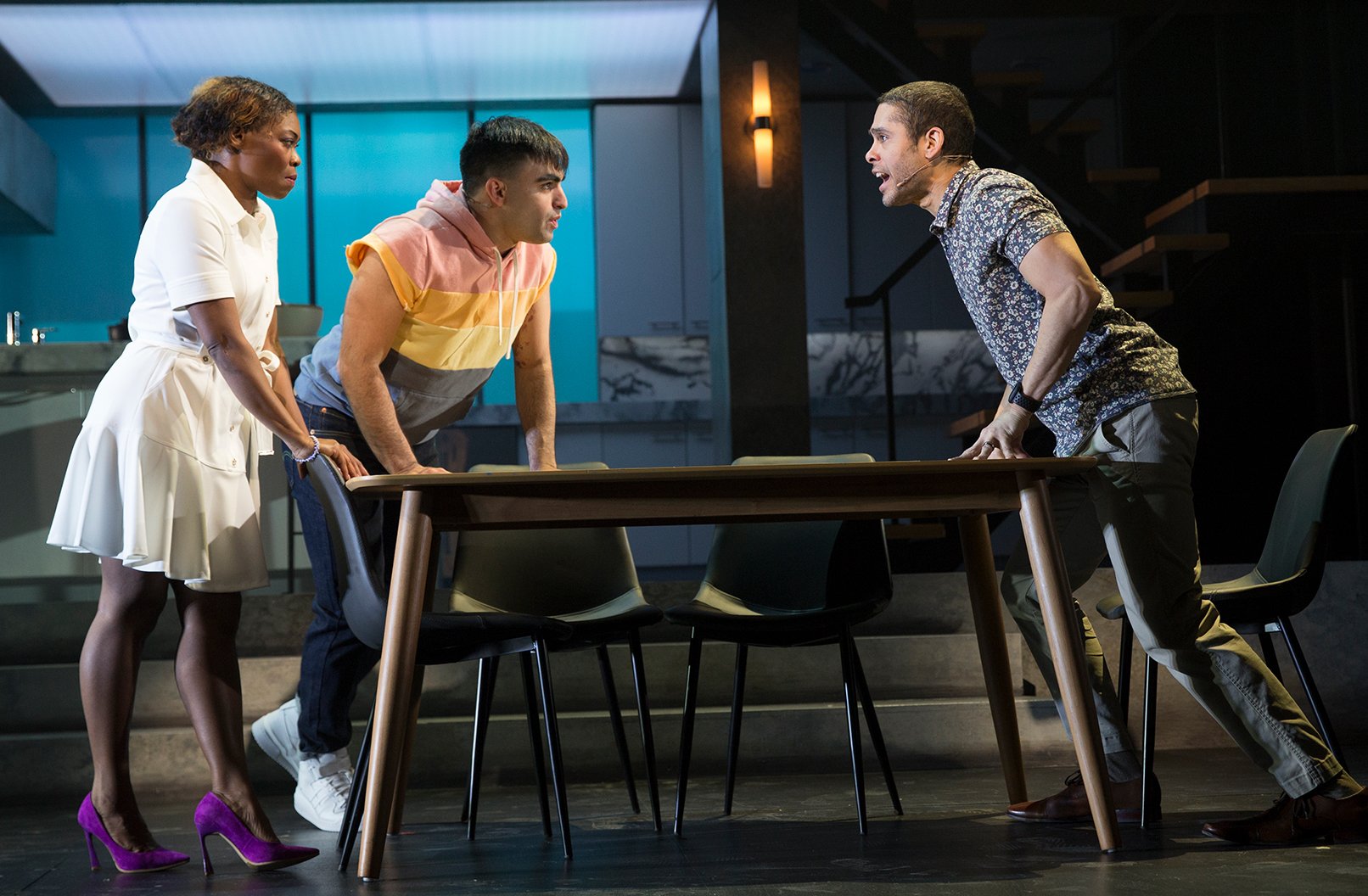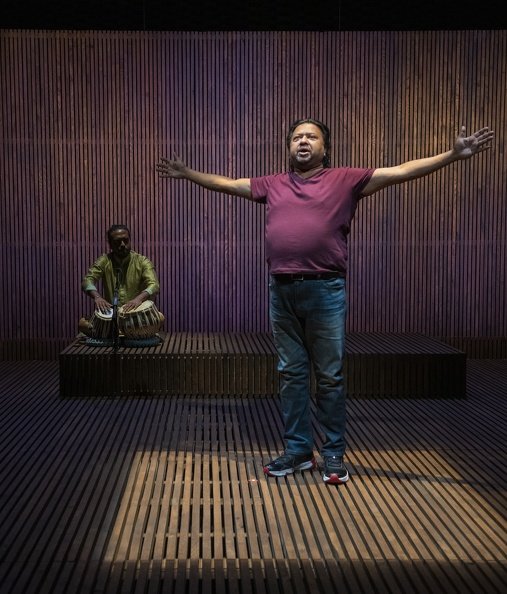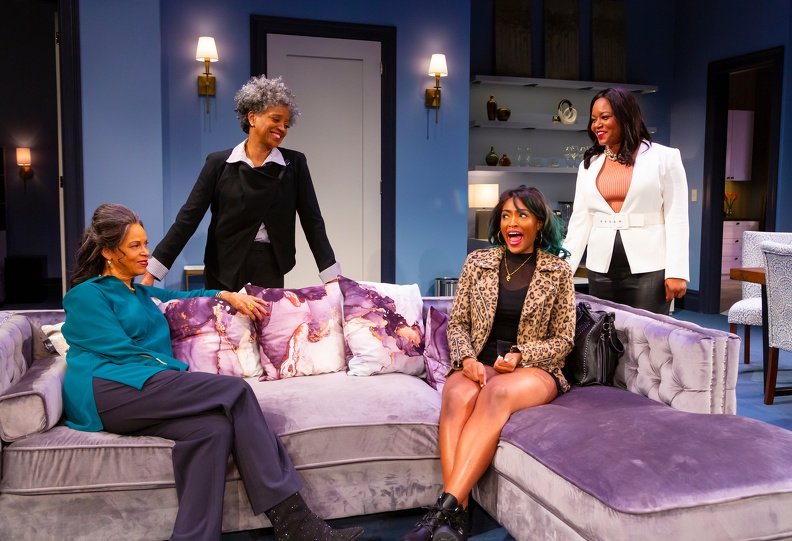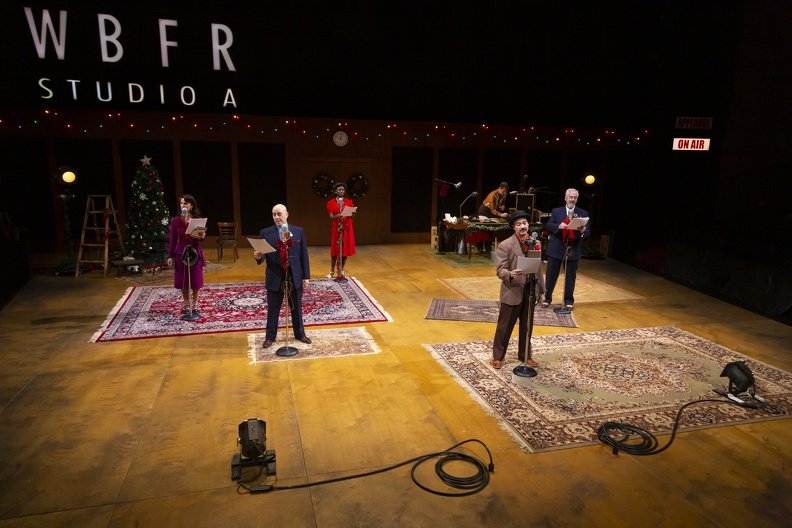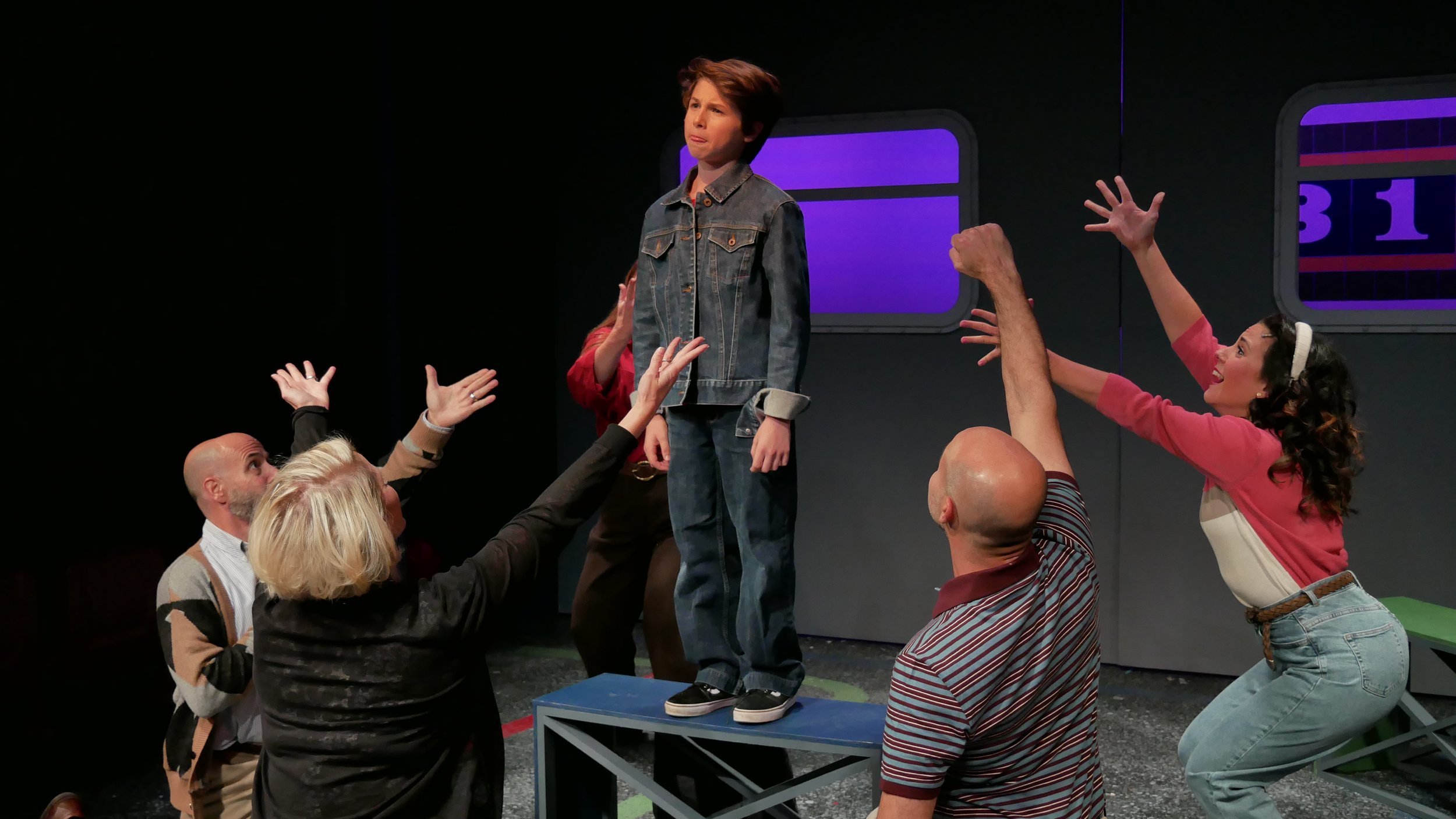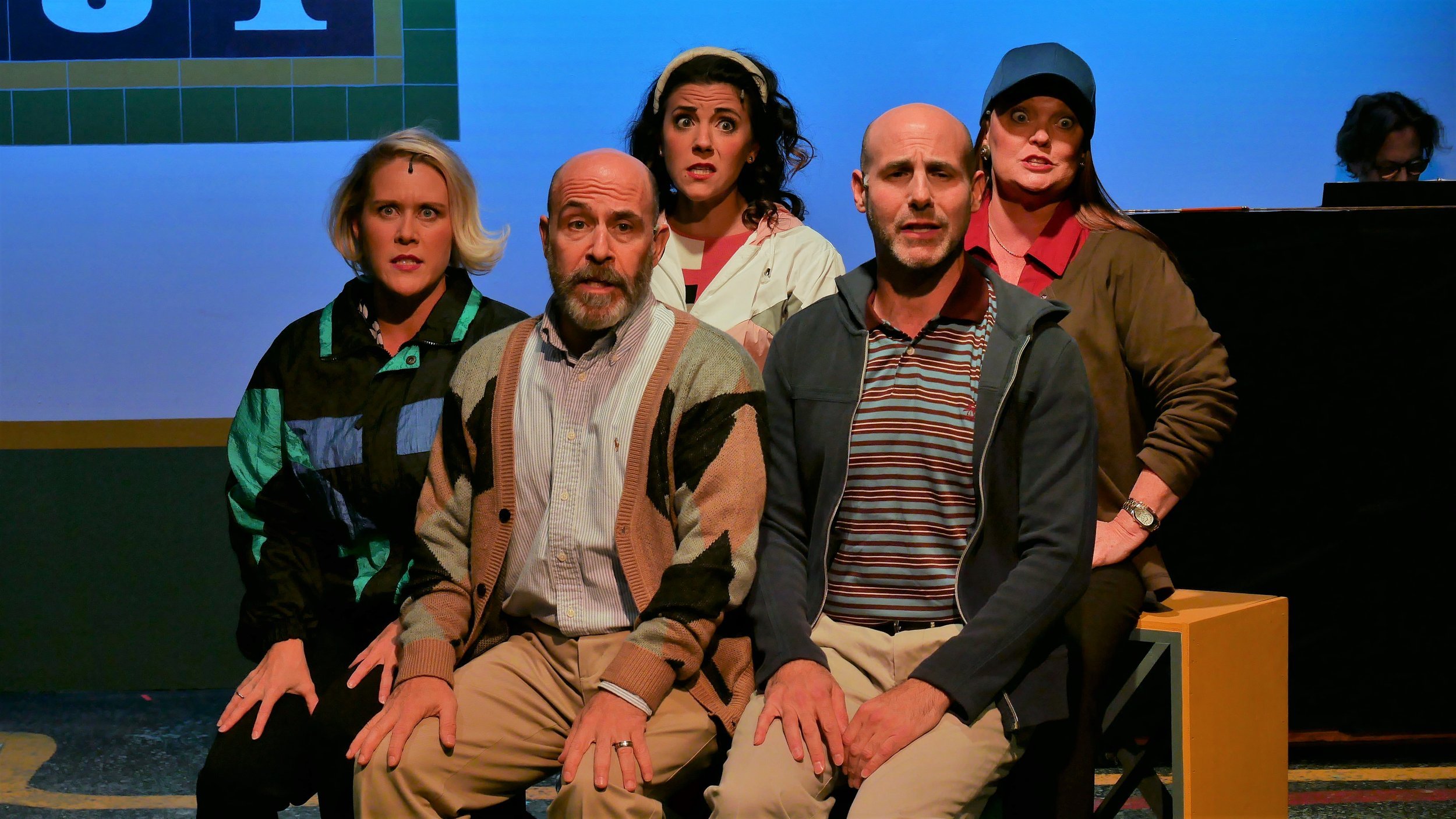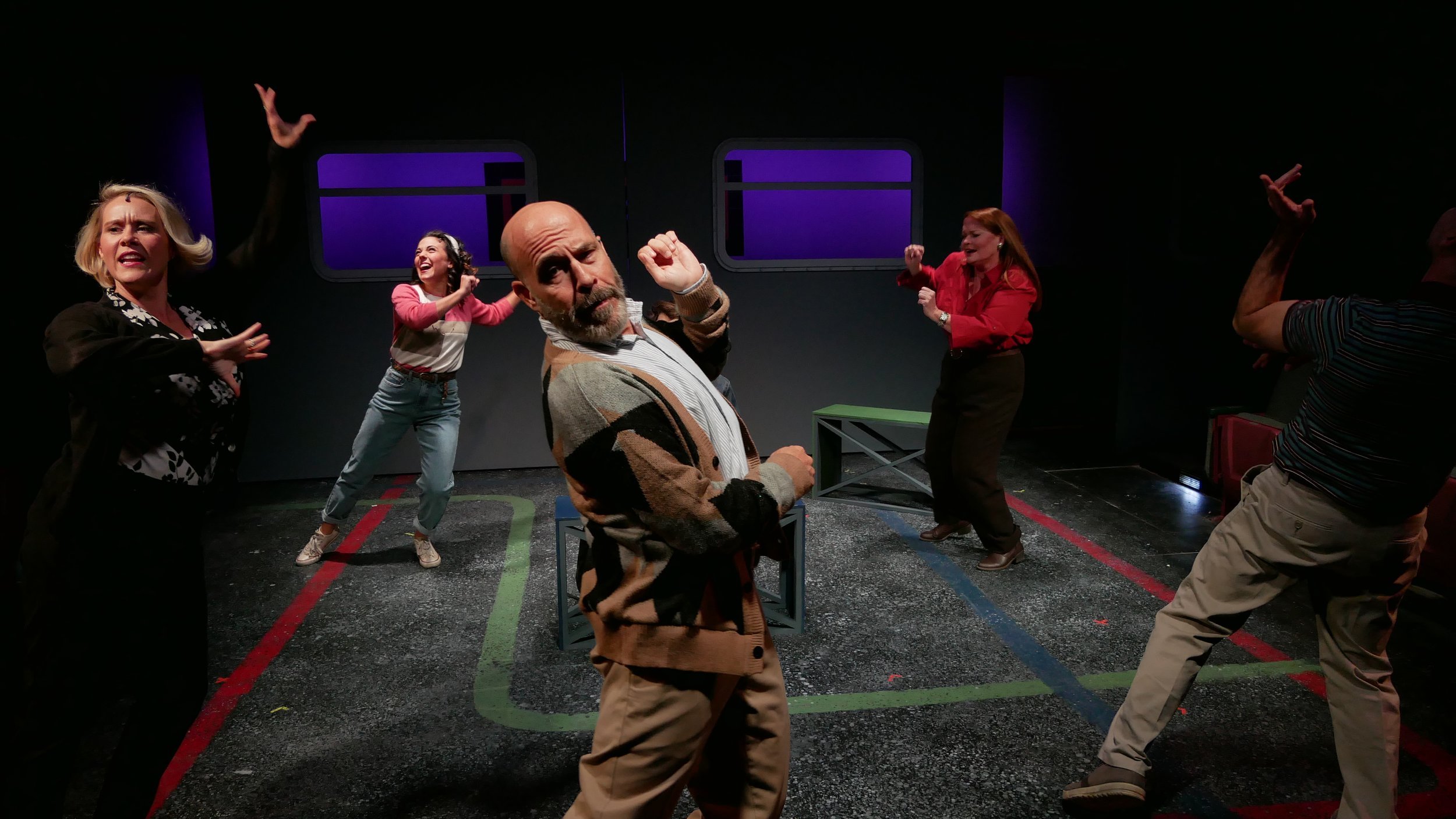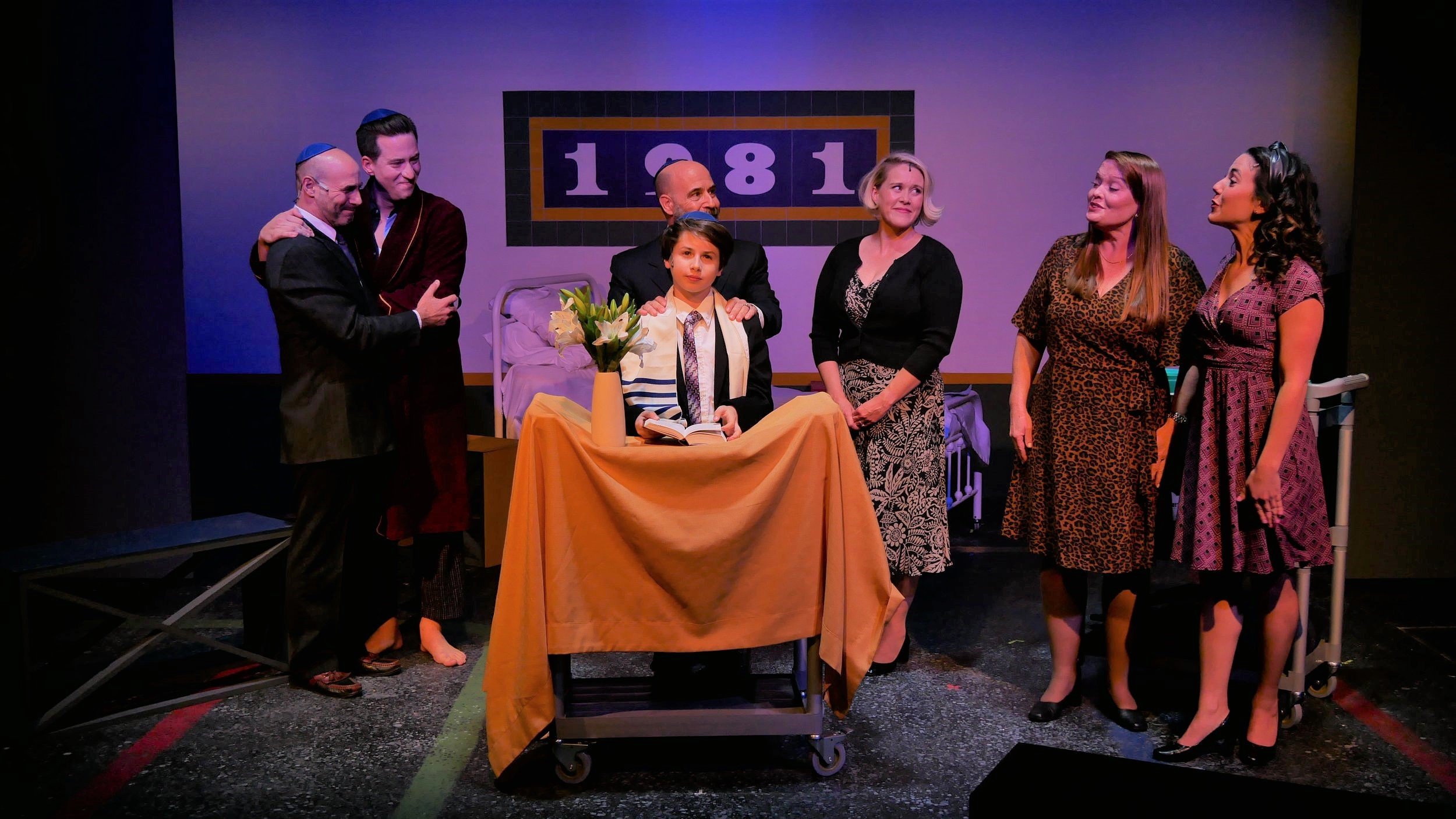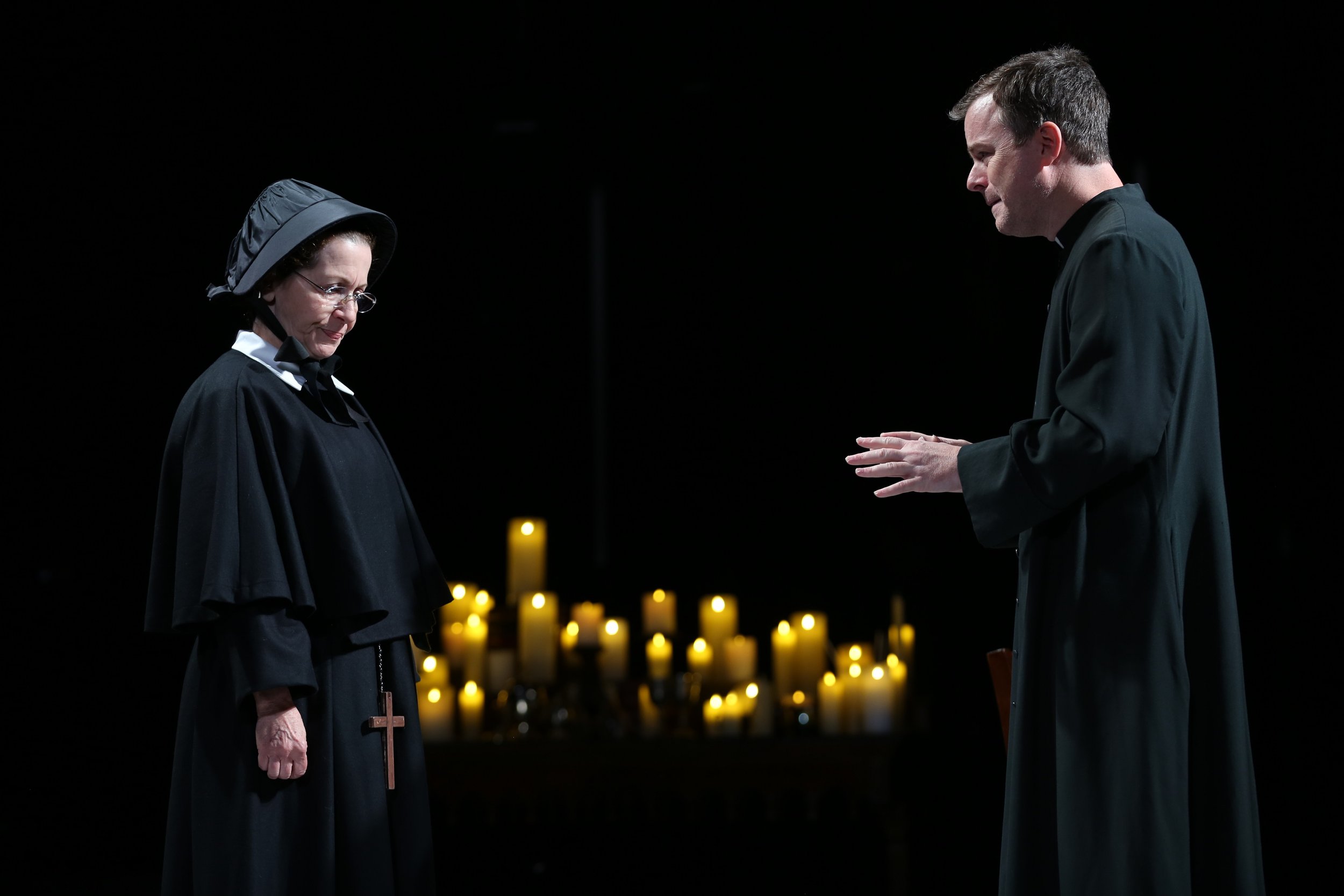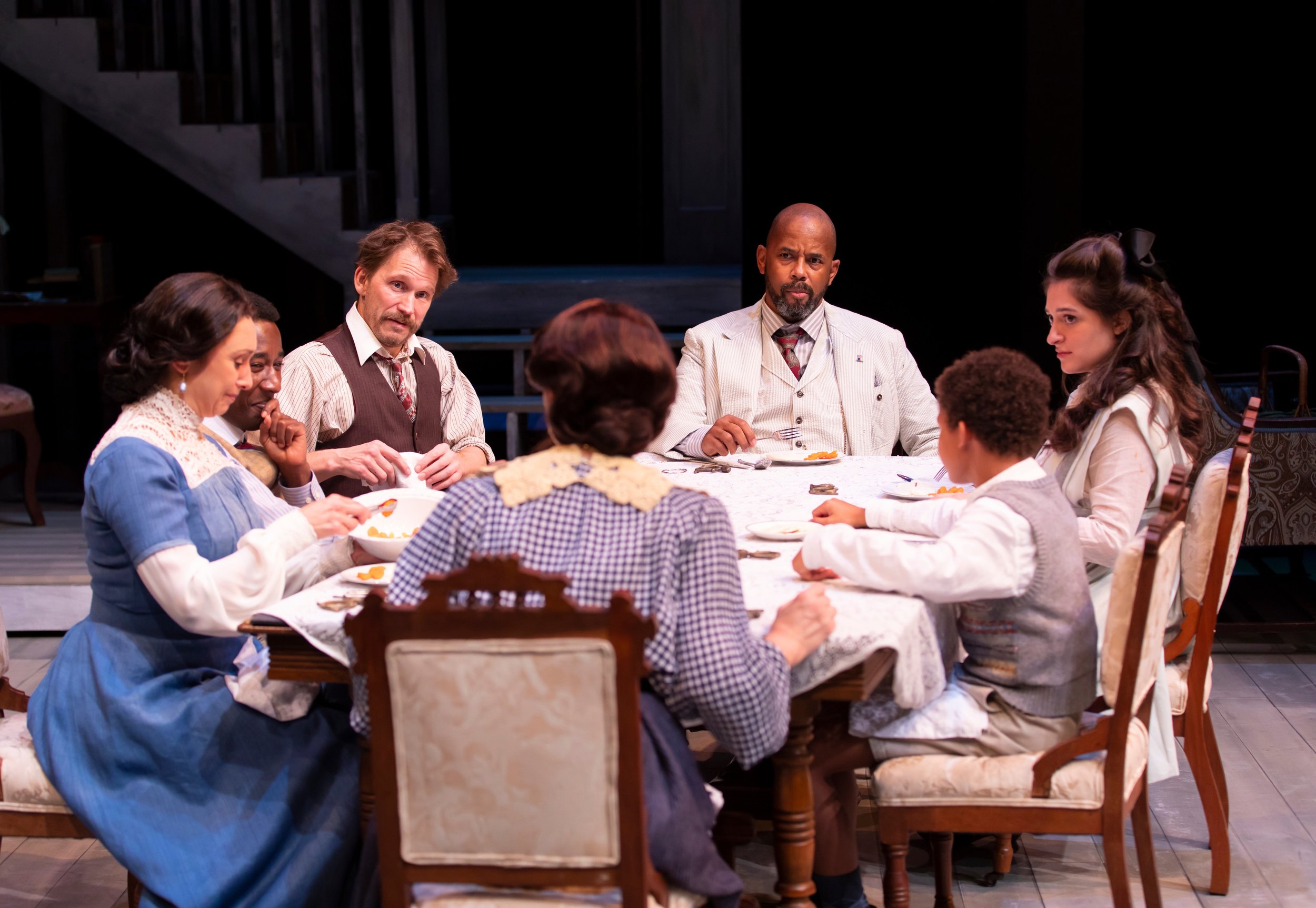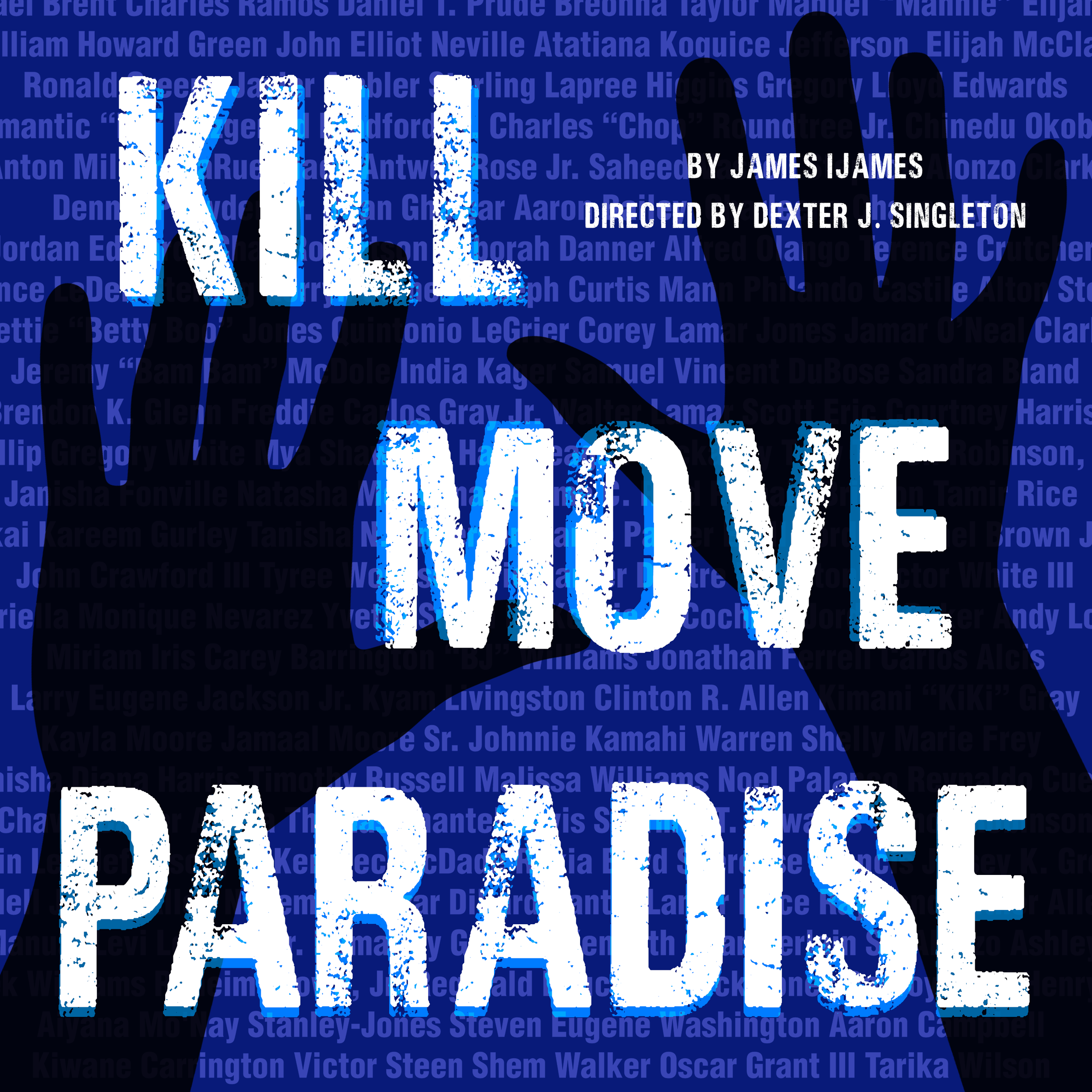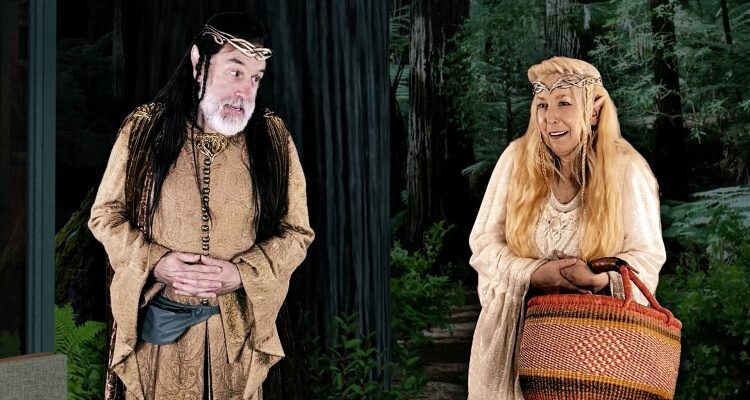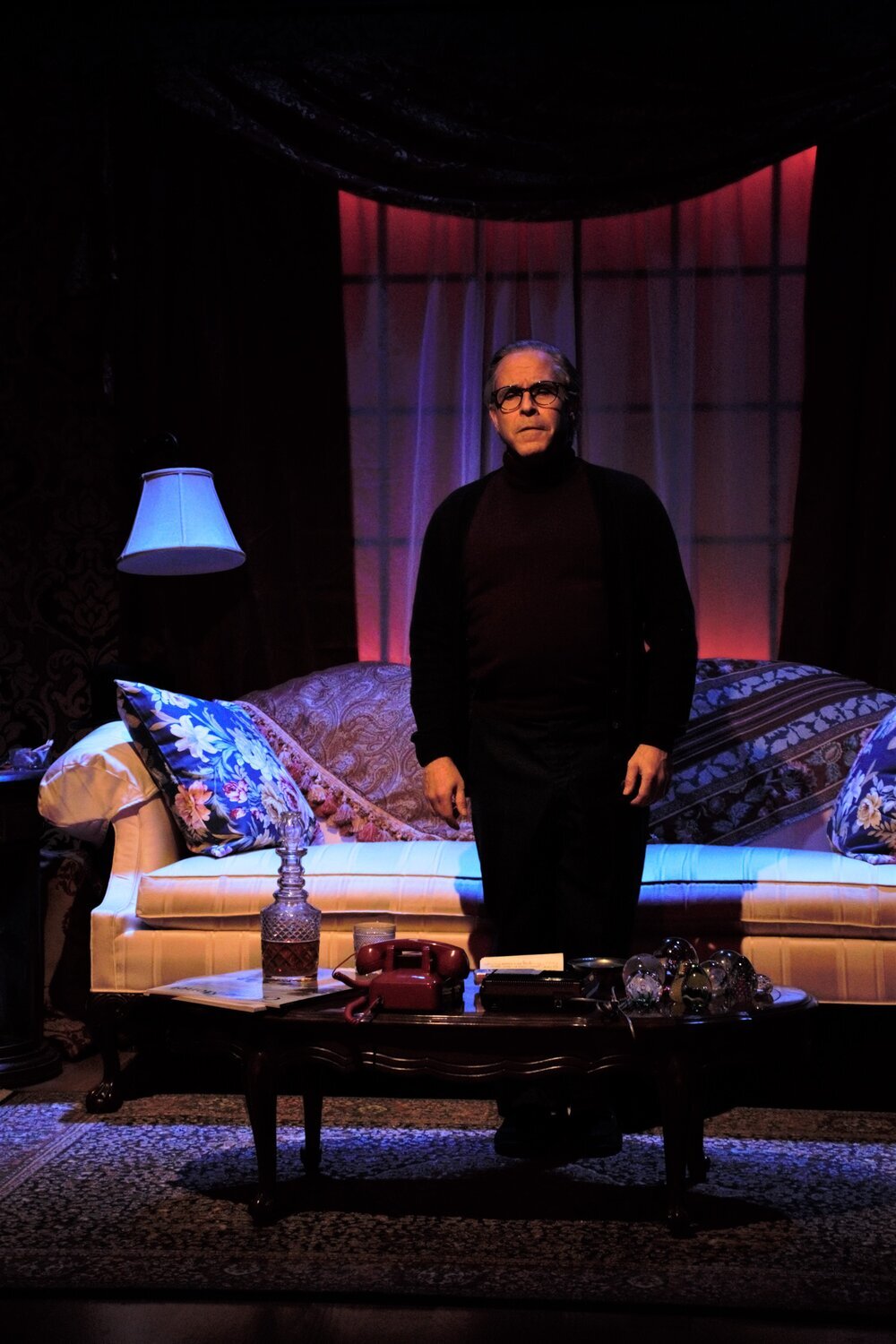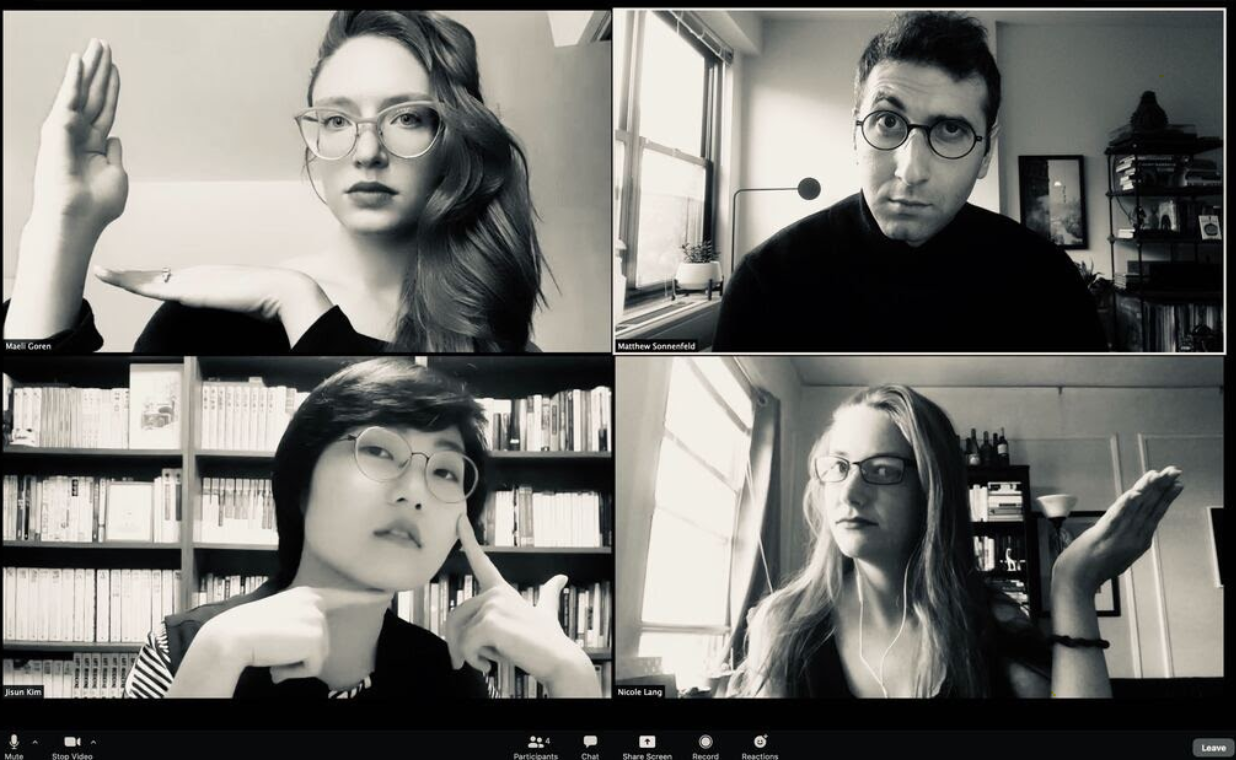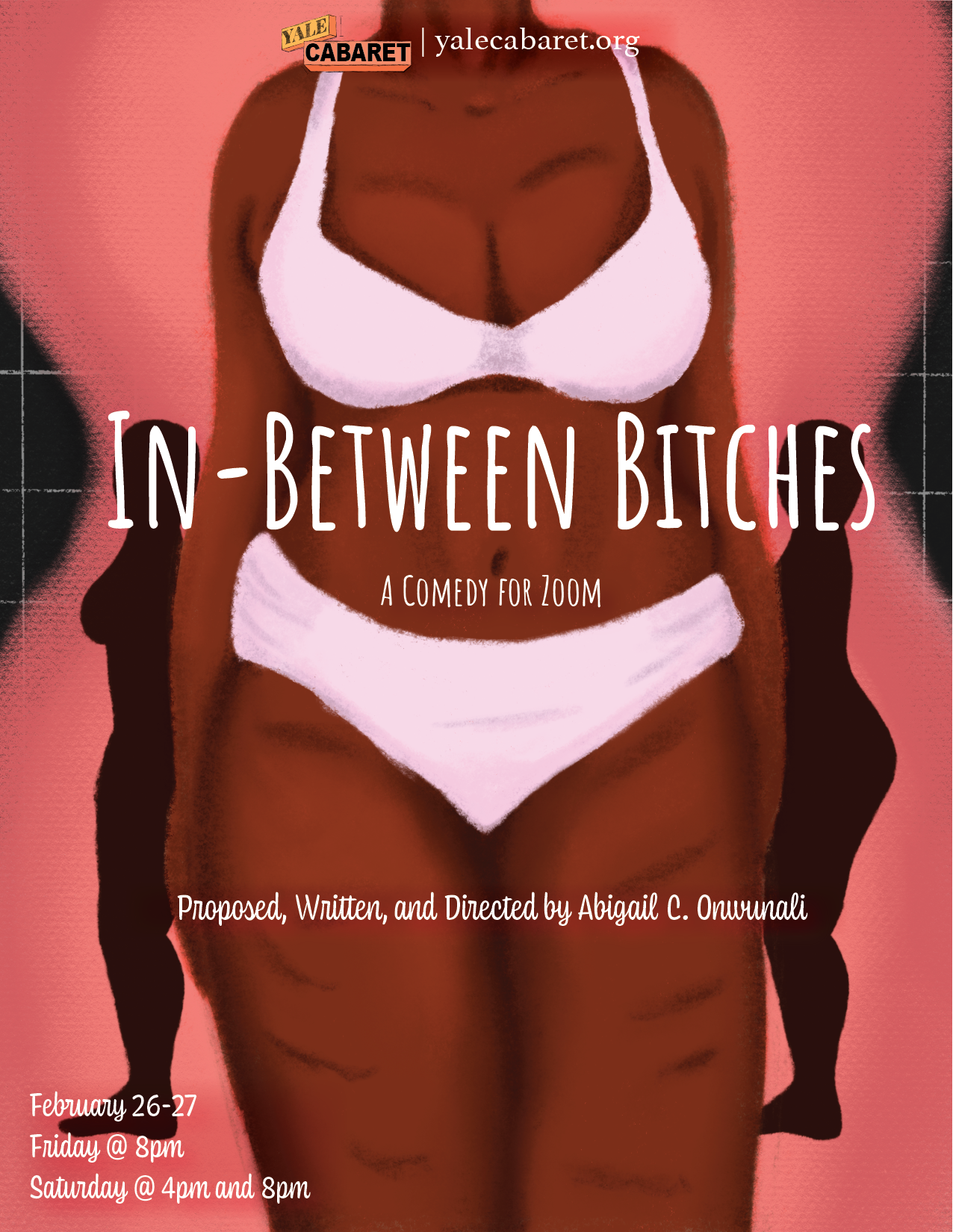Review of Fun Home, TheaterWorks Hartford
Rob Ruggiero, artistic director of TheaterWorks, knows what works in the intimate Hartford theater space and as director of the Tony-winning musical Fun Home, he delivers. The closeness to the action makes the show seem all the more magical as—with a cast of ten, including three children—Ruggiero pulls out a range of moods, situations, and production numbers, all emerging from a memory space in the mind of cartoonist Alison as she tries to come to terms with her own life and the huge, potentially traumatizing shadow her demanding father flung over it.
Julia Nightingale as Medium Alison, Sarah Beth Pfeifer as Alison, Skylar Lynn Matthews as Small Alison in the TheaterWorks Hartford production of Fun Home; photo by Mike Marques
As adapted from Alison Bechdel’s celebrated graphic novel by Lisa Kron (book and lyrics) and Jeanine Tesori (music), Fun Home is a fully engaged and engaging twenty-first century musical. Its story parallels Alison’s story of her coming out as a lesbian—to herself, to the Gay Student Union, to her first girlfriend Joan, and, via letter, to her parents, Bruce (Aaron Lazar) and Helen (Christiane Noll)—during her freshman year in college with her discovery, in a fraught phone call with her mother, that her father has had many same-sex liaisons, some illegal and predatory because of underage partners.
Bruce’s early death means the possibility of any deeper understanding of his story can only come via Alison’s adult perspective on her memories (though it does seem odd that no insights from her brothers, one older, one younger, are ever referenced). Alison’s memories are rendered by Alison as adult (Sarah Beth Pfeifer), Medium Alison, as college student (Julia Nightingale), and Small Alison, as a child (Skylar Lynn Matthews). The age-appropriate casting creates a wonderfully balanced trio whose movements about the stage, in and out of each other’s vantages, amount to fascinating and motivated choreography.
Skylar Lynn Matthews as Small Alison, foreground, Aaron Lazar as Bruce, background, in Fun Home; photo by Mike Marques
As part of the story, the show’s songs are given many dramatic purposes: as soliloquy—the show-stealing “Changing My Major (to Joan)” is all it should be as performed by Julia Nightingale, a perfect Medium Alison; as family fun—when Small Alison (Skylar Lynn Matthews) and her brothers Christian (Myles Low) and John (Jasper Burger) enact their infectious musical ad for “fun home,” the family’s pet name for the funeral home their father runs out of their house; as flashback—when Alison recalls the first outwardly “butch” woman she ever saw, Skylar Lynn Matthews sings “Ring of Keys” with great stage presence, capturing the giddy innocence of the song’s essence remarkably well; as group fantasy—as when the entire cast does a Partridge Family-style rendering of “Raincoat of Love,” that’s catchy, endearing, and cheesy, giving us instant insight into the provenance of Alison’s fondest pop associations.
Christiane Noll as Helen, foreground, Ali Louis Bourzguiz and Aaron Lazar, background, in Fun Home; photo by Mike Marques
The show’s more harrowing songs come mostly in the final third, as the darker elements that keep coming up—Bruce’s seduction ploys, his “do what you want but risk shameful embarrassment” directives to Small Alison, and other potentially harmful moments, including Small Alison’s first sight of a dead body—finally begin to overwhelm the fuzzier, feel-good elements. Christiane Noll’s Helen, who has been a kind of fleeting presence for most of the show, steps fully to center-stage to deliver “Days and Days.” It's the strongest fully mature song in the show and Noll’s rendition, full of pathos and a command of life lessons that, arguably, Alison still hasn’t grasped, is definitive.
In rendering Bruce’s “Edges of the World,” Lazar almost lets us into the emotional crux of this complicated man, but the sense seems to be that he—unlike his wife—doesn’t have a satisfying narrative to hang his heartbreak on. In general, Lazar, best known for his role in FOX’s Filthy Rich, does an estimable job with a role that requires a very episodic treatment: we see Bruce as he’s seen by his daughter at various times in her life and the effort to depict scenes she didn’t see only underscores how little she knows of his true feelings.
Sarah Beth Pfeifer as Alison Aaron Lazar as Bruce in Fun Home; photo by Mike Marques
This comes out in the fraught number “Telephone Wire,” where adult Alison fills in for Medium Alison—who actually took that last drive with dad—and can only maunder over his inability to connect while Bruce keeps up his usual deadpan bonhomie. Whatever we’re meant to feel about this missed opportunity for a possible rencontre, the song keeps us at a distance because neither character’s full interiority is available, Alison—at the time—too young, and Bruce, as ever, too remote.
Of the three CT productions of Fun Home I’ve seen, the current production at TheaterWorks is best. The elements of the show that I’ve found wanting—particularly in Alison’s overview of the past—here seem better managed. I felt more emphatically that Alison, onstage, is dramatizing an effort to make a tellable story from fragments—of memory, of fantasy, of history—and not always sure of the result. This effect was nicely underscored by the sketches and scrawls that, as projections, decorate the stage and at times write over the actors. Key to what works here is how well the space is enlisted to make us inhabit a mind at work with its misery, mysteries, and memorable joys.
Sarah Beth Pfeifer as Alison, Aaron Lazar as Bruce in Fun Home at TheaterWorks Hartford; photo by Mike Marques
The show has been extended through November 6.
Fun Home
Music by Jeanine Tesori
Book and Lyrics by Lisa Kron
Based on the graphic novel by Alison Bechdel
Directed by Rob Ruggiero
Music Direction by Jeff Cox
Set Design: Luke Cantarella; Costume Design: Herin Kaputkin; Lighting Design: Rob Denton; Sound Design: Joanna Lynne Staub; Projection Design: Camilla Tassi; Director of Production: Mike Lenaghan; Stage Manager: Nicole Wiegert; Theresa Stark; Casting: Hardt Casting, LLC
Musicians:
Jeff Cox, conductor/keyboard; Morgan Brown, guitars; Kevin Huhn, bass; Harry Kliewe, reeds; Celeste Cumming, cello; Elliot Wallace, drums/percussion; Selah Kwak, violin/viola
Cast:
Jasper Burger, Ali Louis Bourzgui, Sam Duncan, Aaron Lazar, Myles Low, Skylar Lynn Matthews, Julia Nightingale, Christiane Noll, Sarah Beth Pfiefer, Cameron Silliman
TheaterWorks Hartford
October 8-October 30, 2022; extended through November 6





